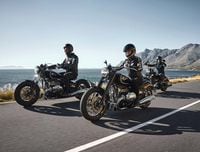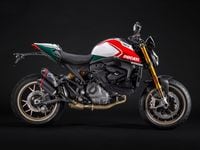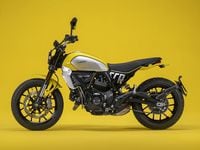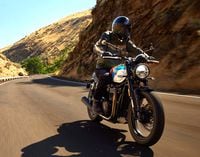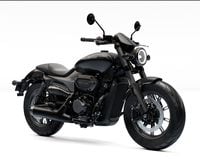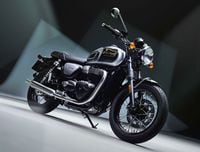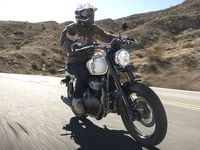This article was originally published in the August 2001 issue of Motorcycle Cruiser.
Sometimes builders have an overriding vision guiding their projects. Other times, the inspiration may come from a single thought. Bill Collier’s Kawzilla falls into the latter category. He thought he could fit a Kawasaki Vulcan 1500 engine into an aftermarket Harley-Davidson FXR frame. Why? Well, nobody’s ever done it, and that intrigued Collier. Besides, truckloads of accessories are available for Harley-Davidsons, so drawing from that deep well would be nice.
Collier began by purchasing a 1996 Vulcan 1500A model, which, among Kawasaki cognoscenti, is considered to be much more powerful than the current generation Classic line. In fact, enough of these bikes were sold to make an inexpensive used donor easy to find. After procuring a candidate for the heart transplant, Collier simply dropped the engine into a Kenny Boyce pro-street frame from Custom Chrome. Surprisingly, the engine slipped right into place, with the assistance of a couple pry-bars. Collier’s rough measurements were right, the metric twin could fit in the American chassis. Don’t think this project was a slam-dunk, though. The fit was so tight that the frame had to be disassembled to get the engine back out. Careful machining was in order.
The challenge of a custom of this magnitude is so many stages of the process depend on each other. For example, the engine mounting bracketry couldn’t be finalized until the powerplant underwent some major modifications. You see, the only way the Vulcan motor was going to get the power from the transmission to the ground was by removing the shaft drive and grafting on a pulley system.
Converting a shaftie to a belt drive is no easy feat. Simply stripping off the shaft hardware and slipping on a pulley is not an option. Numerous clearance and force considerations need to be addressed. First, the pulley would be further out from the engine case than the shaft, exerting side loads onto the countershaft bearings that they weren’t designed to endure. How do you keep a long shaft from becoming a lever? Borrowing from the bag of tricks utilized by dragrace builders, Collier decided to support the shaft on both the inside and outside of the pulley as you would an axle for a wheel. However, in order to construct the rigid piece he needed, Collier had to replace the entire engine side cover. Since the cover housed the alternator, stator and ignition pickups, the new cover had to be machined with mounting points for the factory electrics. For this exacting work, Collier turned to Ben Lake of Eustis, Florida. When Lake finished, the countershaft was supported on both sides by OE bearings, making the assembly stronger than any belt. Also, the new cover uses the stock bolt locations on the engine and even provides a mounting point for the clutch slave cylinder. Since the new drive system was being added to an existing engine, tolerances get tight in places. The space between the pulley and the clutch actuator shaft is only 110-thousandths of an inch! Collier off-handedly says that if the belt breaks, it’ll take the clutch controls with it.
Although the Vulcan 1500A is a smooth engine, Collier wanted to make sure his creation wasn’t a paint shaker so, he used as much of the Kawasaki rubber mounting system as possible, fabricating brackets to hold the mill in the right position. In the FXR chassis, the swingarm is attached to the transmission, and the drive forces are directed forward into the engine. Since the Vulcan engine didn’t have a pivot point, a new swingarm pivot needed to be constructed. The pivot now rides inside a two-inch diameter tube, which is mounted to a block (acting as both the engine mount and swingarm pivot) that links to the engine and the frame rails. Blocks on either side of the swingarm now allow the pivot’s position to be adjusted relative to the engine. Collier says the current setup is with the pivot low to allow the bike to hook up well, off the line.
With all the effort that went into fitting the engine to the frame, it would be a crime if the power delivery weren’t massaged a bit. And it has been—but only a bit...for now. Collier used two sections of 23∕8-inch header pipe to route the intake plumbing so that the K&N filters tuck nicely up under the tank. The carbs were rejetted to mate the intake with the hand-built exhaust system. Although 2-into-1 exhaust systems may not be the most popular configuration among cruiser enthusiasts who choose form over function, Collier believes this type of system is a good way to get maximum power out of an engine without resorting to an annoying volume. So, he took a Vance & Hines Pro Pipe canister and routed a hand bent pair of headers to it. People ask Collier why he decided to cover the headers in exhaust wrap, and he explains that keeping the heat in the exhaust gases helps to keep the flow speed high. In the future, Collier plans to bump the displacement, spoon in some Thunder Mfg. cams and a Dyna ignition. Dissipating the additional heat generated by a beefier engine will be no problem with the trick Earls Performance radiator hiding between the frame down tubes.
The acceleration that the engine generates is scrubbed off by a set of polished GMA discs and calipers front and rear, with Goodridge stainless steel lines linking them to Hurst controls. The final interface between the motorcycle and the pavement is a pair of Avon tires graced with a shiny duo of American Wire Wheels in 21.0 x 2.5-inch front and the 16.0 x 5.5-inch rear sizes. Suspension duties are handled by Progressive Suspension in the back and a set of Sportster stanchions two inches longer than stock.
Kawzilla’s long, low demeanor is accentuated with some clever bodywork. A six-inch stretch on a Nomad tank elongates the distance from the skinny front end (capped with a tiny Sportster fender) to the fat rear. The back end is rounded out by a Jesse James Steeler Fender. Filling the space between the tank and the Jesse James metalwork is a seat built by Bibles Auto Interiors, which provides a remarkably comfortable perch. Capping off this impressive project is an Angel Sandoval (from California Customs) paint scheme which draws attention to the bike without dominating the visual impression of the machine.
Collier has crafted a one-off bike that combines the best of both the metric and SAE worlds—a bike that prompts comments wherever he takes it. Still, Collier seems most entertained by the befuddled folks who scratch their heads and ask why he’d do something like this with a Japanese engine. His answer is simple: “Because I can.”
The man behind the machine
Given the depth of skills required to create Kawzilla, you shouldn’t be surprised that Bill Collier has been around motorcycles all his life. He’s been riding since the tender age of 3, and owned his first bike, a Sears 106, at 12. After a long string of motorcycles, Collier’s first cruiser was a 1994 Honda Shadow.
In 1998, Collier opened Classic Cruisers to fill a gap left vacant by local motorcycle dealerships. He feels most dealers think people just want to keep their bikes stock. As long as some retailers cling to this misguided belief, Classic Cruisers will have a booming aftermarket business. Collier also chose to specialize in customizing bikes so that they better fit the dimensions of female riders. Of course, he had practice with his wife Pam’s bikes. Her current ride, a Kawasaki Nomad, will be one of Collier’s next projects. Look for it to debut at next year’s Bike Week in Daytona Beach, Florida.
When we asked Collier what concerns him the most about motorcycling, he immediately said loud pipes hurt the sport—all for the sake of a rider’s vanity. He has turned away riders looking to buy the biggest, fattest straight pipes. Not that he’s opposed to performance. Collier’s rides regularly include places where he can go out to open it up, but he feels displays of noise and speed in urban areas could endanger our sport.
If you’re in the Orlando area, stop by his shop. Collier’s always willing to talk bikes, but if he’s busy, don’t worry. You’ll usually find a biker or two hanging out.










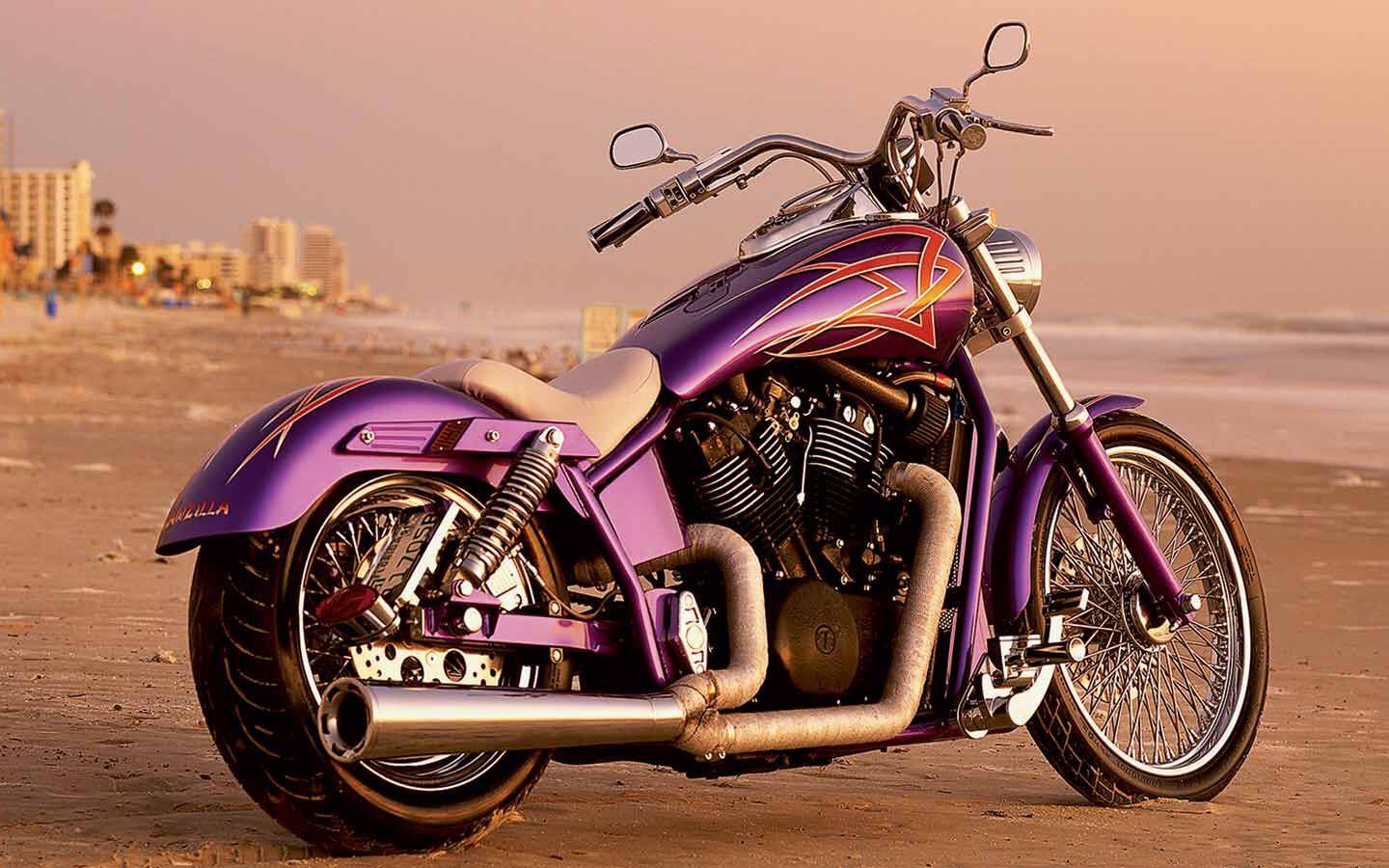
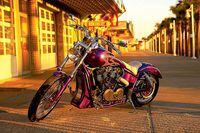

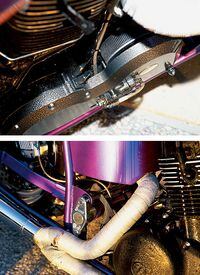
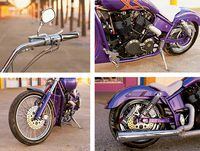

/cloudfront-us-east-1.images.arcpublishing.com/octane/H6Z2IC7WYRBXZNQS4MI3SZ5KPQ.jpg)
/cloudfront-us-east-1.images.arcpublishing.com/octane/IWO5T5PBT5E4HFQ5GK47H5YXR4.jpg)
/cloudfront-us-east-1.images.arcpublishing.com/octane/OQVCJOABCFC5NBEF2KIGRCV3XA.jpg)
/cloudfront-us-east-1.images.arcpublishing.com/octane/F3O2DGLA4ZBDJGNVV6T2IUTWK4.jpg)
/cloudfront-us-east-1.images.arcpublishing.com/octane/ZXYQE3MHLFDSPKNGWL7ER5WJ4U.jpg)
/cloudfront-us-east-1.images.arcpublishing.com/octane/RDF24VM7WVCOBPIR3V3R4KS63U.jpg)
/cloudfront-us-east-1.images.arcpublishing.com/octane/W7RSIBFISNHJLIJESSWTEBTZRQ.jpg)
/cloudfront-us-east-1.images.arcpublishing.com/octane/AERA26ENRNBW3K324YWCPEXYKM.jpg)
/cloudfront-us-east-1.images.arcpublishing.com/octane/YWX3YX7QBBHFXFDMEEEKRG4XJE.jpg)
/cloudfront-us-east-1.images.arcpublishing.com/octane/I7OKI53SZNDOBD2QPXV5VW4AR4.jpg)
/cloudfront-us-east-1.images.arcpublishing.com/octane/IH52EK3ZYZEDRD3HI3QAYOQOQY.jpg)
/cloudfront-us-east-1.images.arcpublishing.com/octane/K2FSAN7OWNAXRJBY32DMVINA44.jpg)
/cloudfront-us-east-1.images.arcpublishing.com/octane/G4XK7JL24FCUTKLZWUFVXOSOGE.jpg)
/cloudfront-us-east-1.images.arcpublishing.com/octane/JJNXVAC27ZCDDCMTHTQZTHO55Y.jpg)
